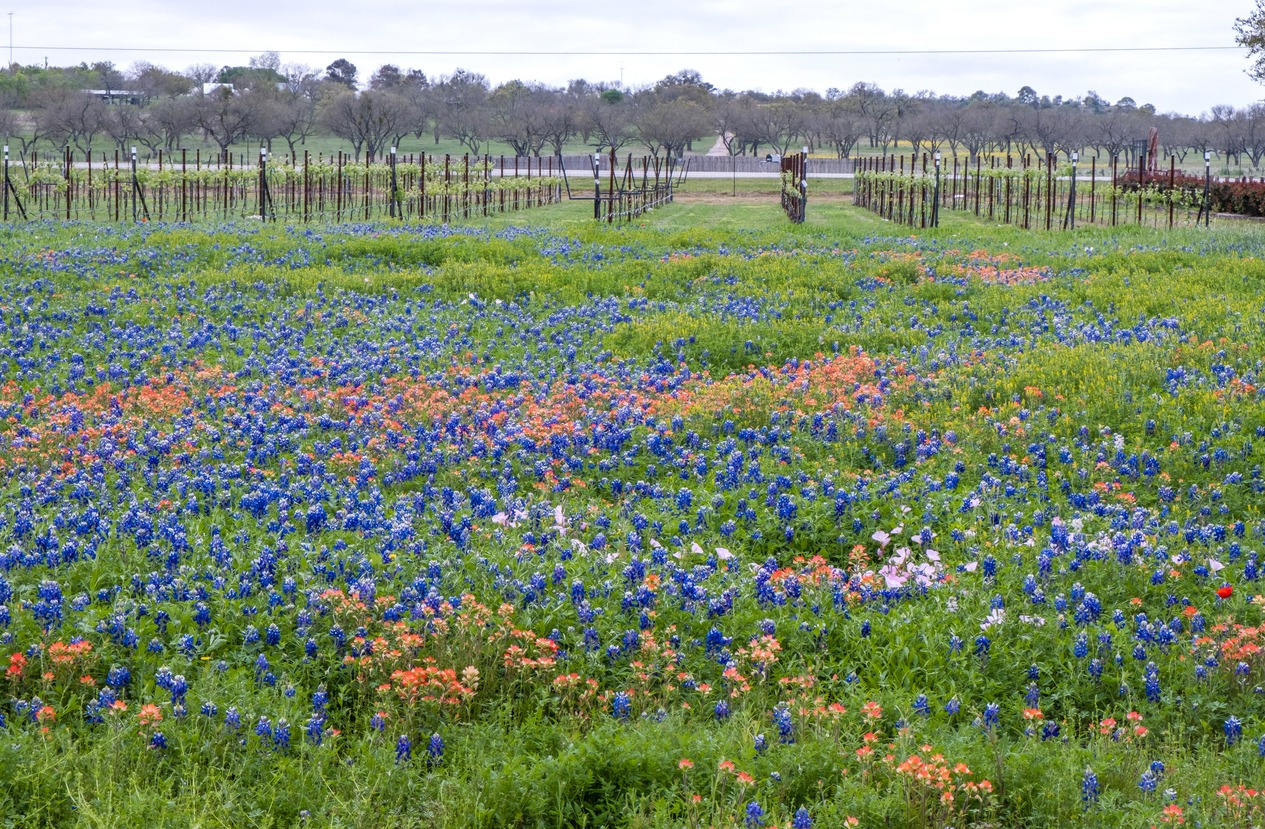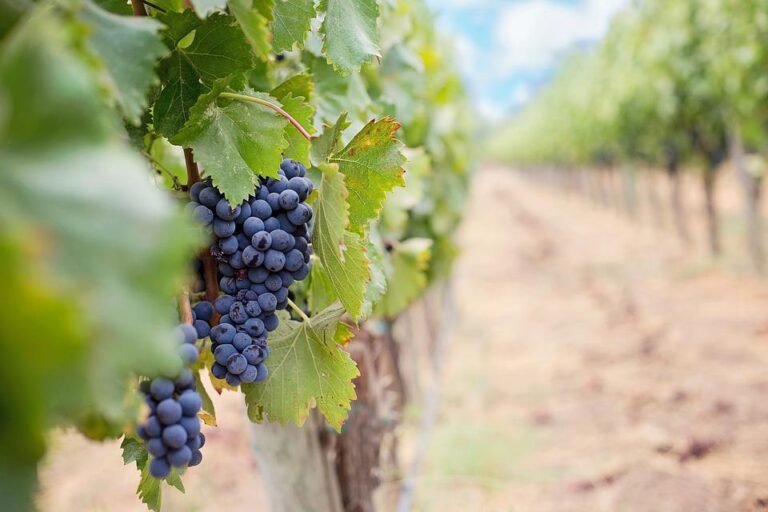Texas, a land of rugged beauty and resilient spirit, is making waves in the world of wine. With a history stretching back to the late 1600s and a vibrant modern industry, the Lone Star State has established itself as a significant player on the global wine map. From scenic vineyards to bold innovations, Texas wine captures the essence of the state’s rich culture and unwavering determination.
Texas Wine’s Rich History
The story of Texas wine took root in the late 17th century when Spanish missionaries planted early vines near present-day El Paso to produce sacramental wine. By the mid-19th century, a wave of German immigrants brought winemaking traditions and technical expertise to Central Texas, planting vineyards and testing grapes that could thrive in the state’s challenging climate.
One of the most enduring contributions to Texas viticulture came in 1883, when Frank Qualia founded Val Verde Winery in Del Rio. Still operating today, it is the oldest continuously run bonded winery in Texas. Val Verde weathered Prohibition by producing sacramental and medicinal wine, a move that helped preserve the state’s winemaking tradition during a turbulent period.
Thomas Volney Munson, a horticulturist based in Denison, also played a pivotal role in shaping Texas’s wine history. In the late 19th century, Munson cataloged and introduced hundreds of American grape varieties suited to local conditions. His work identifying disease-resistant rootstocks helped save the European wine industry from phylloxera, earning him international recognition and the French Legion of Honor. Munson’s contributions laid a foundation that continues to influence viticulture worldwide.
By the mid-20th century the Texas wine industry began to modernize. The 1970s saw a revival of commercial winemaking, with pioneers like the Auler family founding Fall Creek Vineyards in 1975. Their efforts set the stage for rapid growth across the state. Today, Texas counts well over 500–700 wineries, with acclaimed producers earning national and international awards.
Prominent Wine Regions

Texas is home to diverse wine regions, each offering unique flavors and experiences:
-
Texas Hill Country: The largest AVA in Texas—about 9 million acres—and a favorite for wine tourism, with 100+ wineries and tasting rooms. Limestone-rich soils and diurnal swings shape varieties like Tempranillo, Sangiovese, and Mourvèdre. Expect annual festivals, picturesque tasting rooms, and small-town hospitality.
-
Texas High Plains: Roughly 8 million acres and the state’s primary grape-growing region. High elevation, steady winds, and sandy-loam soils suit Tempranillo, Viognier, Roussanne, and more. Many Hill Country and urban wineries source fruit here; producers like Llano Estacado and McPherson spotlight the region’s quality.
-
Grapevine (DFW): An accessible urban wine destination featuring historic stops such as Cross Timbers and a Messina Hof Grapevine location. It’s home to GrapeFest, one of the Southwest’s largest wine events.
-
Lubbock: Despite challenging weather, wineries have thrived. Llano Estacado (1976) helped anchor modern Texas wine, while McPherson Cellars carries on a family legacy. The area’s extreme climate has driven innovation in canopy, frost, and hail management—making it a hub for research and experimentation.
Each region showcases the creativity and adaptability of Texas winemakers, producing wines that reflect the state’s diverse terroir.
How to Visit — A 2–3 Day Hill Country & High Plains Route
Day 1: Austin → Texas Hill Country (US-290 Wine Trail)
-
Late morning: Stop at Fall Creek Vineyards (Driftwood) for a Texas classic flight and limestone-influenced whites.
-
Afternoon: William Chris Vineyards (Hye) for estate-driven reds; patio tastings with vineyard views.
-
Golden hour: Pedernales Cellars (Stonewall) for Tempranillo and GSM; sunset over the Pedernales River valley.
-
Overnight: Fredericksburg (walkable dining; book a driver or shuttle for tastings).
Day 2: Hill Country deep-dive (short hops, low driving)
-
Morning: Duchman Family Winery (Driftwood) for Vermentino and Sangiovese.
-
Midday: Becker Vineyards (Stonewall)—estate Viognier & a broad portfolio; lavender fields in season.
-
Optional stop: Lost Draw Cellars (Fredericksburg) for High Plains-sourced single-varietals.
-
Evening: Dinner in Fredericksburg; consider a sparkling toast at a local wine bar.
Day 3 (Option A): San Antonio/Austin fly-out or leisure return
-
Brunch in Johnson City; quick hike at Pedernales Falls State Park before heading home.
Day 3 (Option B — High Plains focus): Fly Austin → Lubbock AM
-
Midday: McPherson Cellars (Lubbock)—High Plains pioneers; Rhône- and Spanish-leaning whites/reds.
-
Afternoon: Llano Estacado (Lubbock)—tour + tasting to see the scale and history of modern Texas wine.
-
Evening: Lubbock dining; fly out or overnight and return next morning.
Pro tips
-
Book tastings on weekends; many top spots fill up.
-
Designate a driver or reserve a local wine shuttle.
-
Pack a wine shipper (TSA-approved) if you’re flying home.
Economic Contributions
View this post on Instagram
Texas might be better known for its cattle ranching industry, but its wine industry is no small player—contributing ~$20 billion+ annually to the state economy. It supports well over 100,000 jobs, paying billions in wages across farming, production, logistics, marketing, and hospitality.
Tourism is another major engine. Millions of visitors tour Texas wineries each year, spending hundreds of millions of dollars. From wine festivals to vineyard tastings, these experiences boost local economies and support small businesses. Popular events like Fredericksburg’s wine festivals draw thousands, blending entertainment with wine education.
Looking ahead, the industry is poised to grow. Texas now has hundreds of licensed wineries and 10,000+ acres under vine, with steady expansion reflecting rising demand at home and abroad. Exports are also gaining traction as more markets discover the distinctiveness of Texas wines.
Challenges and Innovations
View this post on Instagram
The Texas wine industry faces its share of challenges, but innovation is a hallmark of Texas winemakers:
-
Pierce’s Disease: A major threat mitigated by planting tolerant varieties like Blanc du Bois and Black Spanish (Lenoir), alongside research from institutions such as Texas A&M and Texas Tech.
-
Climate Extremes: With late freezes, hail, heat, and drought, wineries employ frost protection, shade structures, deficit irrigation, and heat-resistant varieties to stabilize yields.
-
Sustainability: Eco-friendly practices are rising—from soil-health and water-conservation to on-site solar and biodiversity initiatives—reducing environmental footprint.
-
Women in Wine: Women increasingly lead in viticulture, enology, and ownership. Trailblazers like Susan Auler (Fall Creek) have inspired a new generation of Texas talent.
-
Tech in the Vineyard/Winery: Growers use drones, precision agriculture, canopy sensors, and AI-driven weather tools, while wineries leverage data-guided fermentation to improve quality and consistency.
- Technology in Viticulture: Texas wineries are leveraging technology such as drone monitoring, precision , and AI-based weather forecasting to optimize their operations. These advancements help improve both the quality and sustainability of wine production.
5 Bottles to Try — Styles & Producers
View this post on Instagram
-
Texas Tempranillo from Pedernales Cellars (Hill Country) — Medium-plus body, red fruit + spice, Texas’s flagship red in many lineups.
-
High Plains from Viognier McPherson Cellars (Lubbock) — Stone fruit, white flowers, crisp finish; a benchmark Texas white.
-
Mourvèdre (or GSM Blend) from William Chris Vineyards (Hye) — Savory red fruit, herbal lift; superb with Texas barbecue.
-
Vermentino from Duchman Family Winery (Driftwood) — Zesty citrus, saline snap; patio-perfect and seafood-friendly.
-
Hill Country Rosé from Becker Vineyards (Stonewall) — Dry, berry-bright, versatile; a great entry to Texas wines for mixed groups.
Also worth hunting: Lost Draw single-vineyard reds, Fall Creek Chardonnay/Chenin-influenced whites, and select Llano Estacado reserves.
Future Prospects
The future of Texas wine looks bright. Continued investment in precision agriculture, nursery stock, and site selection is lifting quality statewide. Education pipelines—from Texas Tech’s viticulture and enology programs (including the Fredericksburg teaching facilities) to extension workshops—are training the next generation.
Sustainability will remain front-and-center as producers adapt to climate variability and consumer demand. Meanwhile, appetite for local, character-driven wines keeps growing. Signature styles—Texas Tempranillo, Viognier, Rhône blends, and High-Plains-sourced reds—are increasingly common on wine lists and retail shelves across the country.
Conclusion
Raise your glass to Texas, where history, innovation, and resilience come together in every bottle. Whether you’re sipping a bold Tempranillo from the High Plains or a crisp Viognier in Hill Country, you’re tasting the spirit of the Lone Star State. Visit a Texas winery or pick up a local bottle to experience it yourself—you’ll be supporting a thriving industry that’s as bold and dynamic as Texas itself.
From its storied past to its promising future, Texas wine is a celebration of culture, creativity, and community. Cheers to that!


